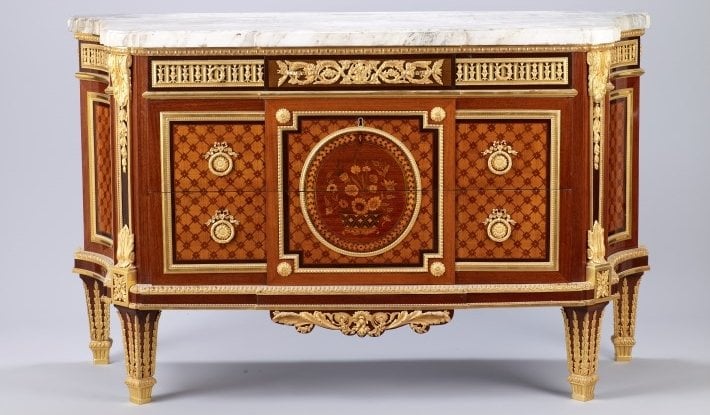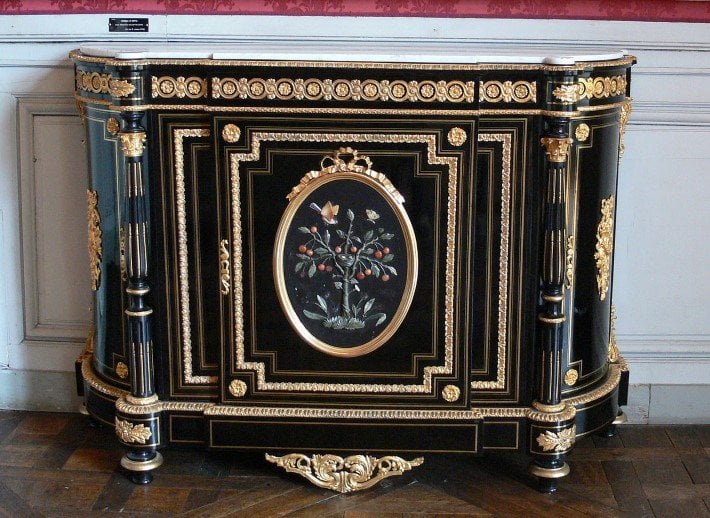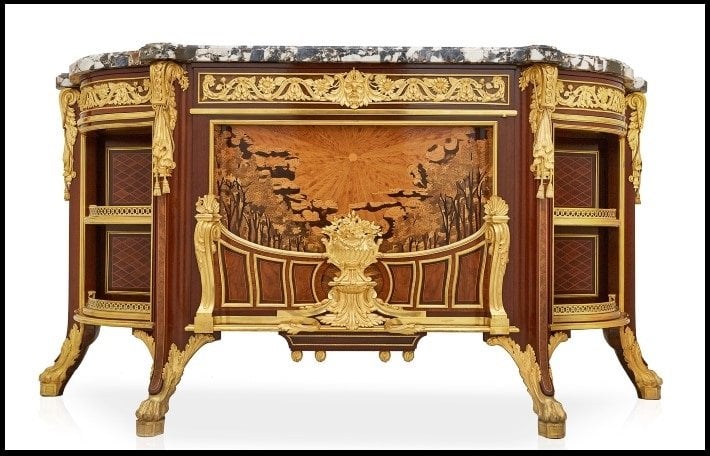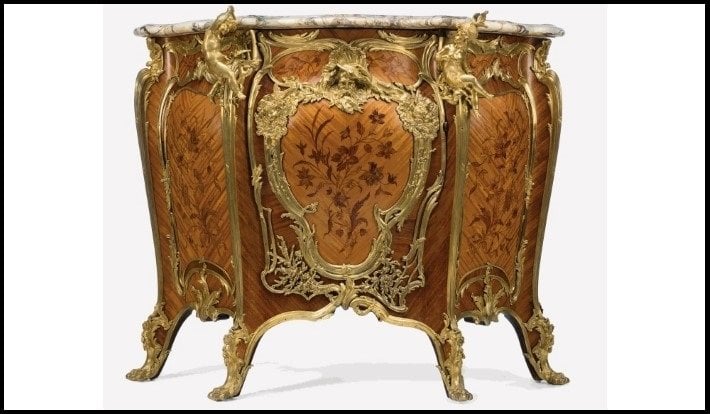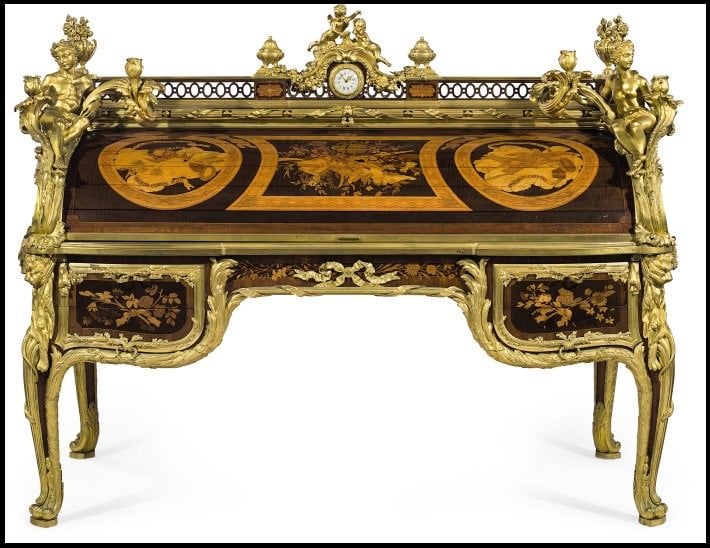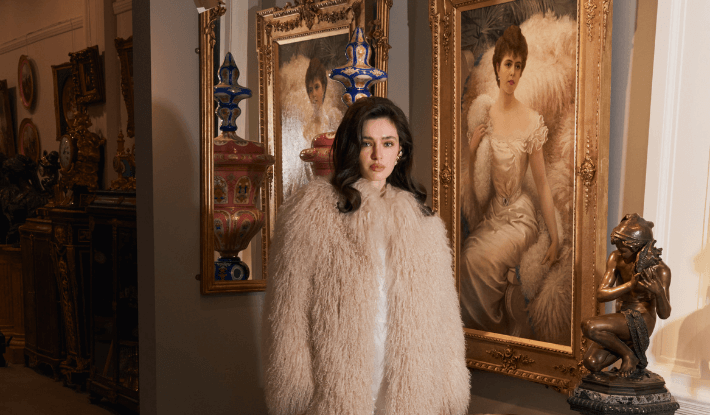Our latest post is the second & final blog explaining the diverse and exciting history of French furniture during the 19th Century.
Part 1 focussed on the early 19th Century and ended with the reign of Louis Philippe, the restored Bourbon King who tentatively held power for eighteen years, but the age of revolution in France was not yet over.
Since the early 19th Century, France had been politically unsettled and divided. When one faction was in power, the other was plotting reform. By 1848, the monarchy had been reinstated for 23 years and another revolution was gathering momentum.
The Revolution of 1848 overthrew Louis-Philippe and the monarchy for the final time. This had major consequences for France and, of course, its decorative arts and furniture.
Napoleon III- an Extravagant Emperor
After four years which are known as the Second Republic, the nephew of Emperor Napoleon I, Napoleon III, was crowned as Emperor of France in 1852, and France entered its Second Empire between 1852 and 1870.
Napoleon III as Emperor of France by Franz Xaver Winterhalter, 1855. Via Wikimedia Commons
The Louis-Philippe style quickly fell out of fashion as Napoleon III set about establishing his new presidential power. Rather than reverting to the Empire Style and the promotion of the ancient empires favoured by his uncle, Napoleon I, Napoleon III set about establishing his legitimacy through wealth, lavish ceremony and grandeur.
In fact, Napoleon III made for an unusual Emperor in his aesthetic taste – rather than celebrating the new or the republican, he instead harked back to characteristics that were associated with the absolutist French monarchy of the 18th Century.
Considering that he was meant to represent a forward-looking, fresh start for France, it was quite ironic that in many ways Napoleon III presided over an age of revival in fine, heavily ornate furniture and the decorative arts.
However, given that France had been embroiled in social and political turmoil for the past 60 years, perhaps this age of revival was a nostalgia for the continuity that had united France for several hundred years up until the Revolution of 1792.
What was the Napoleon III style?
The Napoleon III style dominated painting, architecture, furniture and the decorative arts between 1852 and 1880 during the Second Empire under its namesake, Napoleon III.
Sometimes referred to as the Second Empire style, the Napoleon III style asserted its authority and presence through unadulterated wealth. Fine craftsmanship and excessive details were paramount features of this style, and one of the primary rules in Napoleon III style decoration was to never leave any space unadorned.
What were the main influences on the Napoleon III period?
Furniture and the decorative arts during the Napoleon III period were inspired by a wide range of previous styles. Many of these styles originated under and were associated with the French Bourbon monarchy of the 18th Century, who were known for presiding over the French Golden Age of furniture.
The result was a fantastically eclectic display of the Louis XV, Louis XVI, the Gothic, the Renaissance and the Baroque styles all merged into one.
Not all the influences on the Napoleon III period were stylistic. Whilst ruling in an authoritarian manner, Napoleon III presided over an era of great urbanisation and industrialisation, which resulted in huge economic growth in France.
This meant that the middle class ‘bourgeoisie’, who had been waiting in the wings since the beginning of the 19th Century, truly began to flourish as a social class.
In many ways, members of the bourgeoisie are seen as some of the greatest ‘copycats’ in history – whatever the upper classes had, they wanted and would have replicated. (Think the very beginnings of the ‘Kate Middleton effect’ in 19th Century France!)
Consequently, greater demand made for greater production, which made for a huge boom of interest in the furniture industry. This further influenced the greatest makers of the period to look back to famous pieces of furniture made during the 18th Century, and 19th Century models of these became very highly sought after.
What did Napoleon III period furniture look like?
During the Napoleon III period, furniture that was luxuriously plush and comfortable was of absolute importance.
Gone were the sombre, dark, unadorned woods of the Louis-Philippe style. Napoleon III style saw a resurgence in the popularity of exotic woods, gilding, contrasting lacquer-work and ebony stains as well as chinoiserie and pieces inspired by Japan.
An ebonized wood chest in the Napoleon III style, featuring pietradura and Neoclassical revival fluted columns. Andreas Praefcke via Wikimedia Commons.
Soft furnishings typically featured elaborate upholstery in richly coloured fabrics, adorned with patterns, tassels, fringes and tapestry designs.
This polychrome and abundance of colour became popular, enhanced by a variety of marbles, malachite, onyx, porphyry
During the 19th Century, many new and exotic materials from overseas were introduced that included rattan, bamboo and papier-mache which were used in abundance for furniture designs.
Not only were the materials for construction new and abundant in type, but the range of types of furniture expanded exponentially.
The French had enjoyed a complicated encyclopaedia of furniture since the 18th century, but under the eclectic revivalism of Napoleon III the range of designs exploded exponentially. Many diverse types of sofas and chairs came to prominence during the period, including, for example, the 'pouffe' footstool.
Diverse seated furniture in the apartments of Napoleon III at the Louvre - a 'canapé indiscret' to the foreground which makes chatting easier, and a 'canapé en confidant' to the upper right, which was built for three people. Chinoiserie and a baroque revival table can be seen against the wall. CK Golf via Flickr.
The interior scheme that resulted was a charming array of history – fluted Neoclassical style columns, the shell motifs and rocaille shapes of the Rococo, caskets and chests shaped as cathedrals which referenced the Gothic and Renaissance, gilt acanthus leaves of the Baroque and an overall display of a rich, diverse colour palette.
The Late 19th Century – Fine Furniture, Big Exhibitions and Big Brands
The Napoleon III period formally continued until 1871, when Napoleon’s poor foreign policies and tendency for war saw France invaded by King William of Prussia.
Paris surrendered to the invasion, and a mean peace treaty was agreed. The Third Republic was established by French officials and France entered a period of huge political division.
This period at the end of the 19th Century up until the outbreak of World War 1 in 1914 is often post-titled the ‘Belle Epoque’, for, despite the division and turmoil, it was an age that saw the birth of innovative popular amusements and made significant cultural leaps.
Interestingly, the dominant style of decoration did not finish with the end of Napoleon III. For the last two hundred years, the changing of the French ruler had signalled the changing of the French style.
However, the revivalism and eclecticism of the Napoleon III period came to last until the early 20th Century, despite beginning to coincide with the Art Nouveau movement from about 1890.
The Great Exhibitions of the 19th Century
Under Napoleon III, it was essential for the new Emperor to establish peace and prosperity in France. Napoleon also sought to present Paris as a centre for the decorative arts and fine arts. He was inspired by the Great Exhibition of 1851 which took place in London at the Crystal Palace built by Queen Victoria in Hyde Park.
The Crystal Palace built in Hyde Park, London, to house the Great Exhibition of 1851. From the inner front cover of London As It Is Today: Where to go, and What to See During the Great Exhibition. Printed in 1851 in London by H.G. Clarke and Co. Via Wikimedia Commons.
In 1855, Napoleon III cooperated with the British to organise the Exposition Universelle of 1855 in Paris, to rival that of London’s.
Artists and makers from 29 countries participated, and the Palais de l’Industrie was built to house furniture and decorative works, with the fine arts displayed in a separate location.
The exhibition, which lasted from May until November, was a great success. The many makers of fine furniture that exhibited were able to present their wares to a huge audience of 5,162,330 visitors!
Like France, many countries were inspired by London’s Great Exhibition of 1851. They were held successively in New York in 1853, in Philadelphia in 1876 and again in London in 1862.
But Paris, as intended by Napoleon III, truly became the greatest centre for the decorative arts, furniture and painting even after the Emperor was overthrown. The city of Paris held further Exposition Universelle’s in 1867, 1878, 1889, 1900, and came to be revered worldwide for the finery on display.
Here, it is possible to see the sheer size of the interior of the Palais de l'Industrie built for the Exposition Universelle, Paris, in 1855. Engraving by E. Therond. Via Wikimedia Commons.
The Great Makers of the 19th Century
Thanks to the growth of exhibitions, it was possible for the French makers of furniture and the decorative arts to really come into the public eye.
Several, who were deemed especially skilled in their crafts, were able to build fame, fortune and reputation that have allowed their names to survive until today. Their works have become highly valued collectors items and antiques.
Many of the pieces that won prizes at the big exhibitions were works that were made after an important 18th Century piece of furniture. Here, we take a look at some of the biggest names and most exquisite works.
Linke (1855-1946)
'Meuble Soleil', ormolu mounted side cabinet by Linke, which shows the revival of 18th Century styles © Mayfair Gallery
Francois Linke was one of the most important furniture makers, an ‘ebeniste’, working in Paris from 1875. He is celebrated for the high quality of his furniture and is widely credited with playing an important role in the continuation of the late 19th Century popularity of Rococo and Neoclassical style furniture.
Today, pieces of furniture by Linke are some of the most sought after collectibles of 19th Century antiques on the market.
Barbedienne (1810-1892)
Ferdinand Barbedienne is one of the most famous 19th Century manufacturers of works in metal, which, true to the eclecticism of the Napoleon III period, he created across a wide range of styles.
Barbedienne employed a huge 420 artists at his foundry! His works were exhibited at multiple international exhibitions and won many prizes, including the Grand Medal of Honour in Paris in 1855. His pieces can be distinguished for their stylistic flair and technical mastery.
Dasson (1825-1896)
Desserte console and pair of console tables by Dasson. Note the fluted legs and columns that reference the Neoclassical style. Image via Mayfair Gallery.
Henry Dasson was especially known for making furniture mounted with ormolu, or gilt-bronze. He gained prestige in this field after training as a bronze sculptor before turning his hand to furniture making.
At the 1878 Paris Exposition he exhibited a table made completely from ormolu. His pieces are distinguished for the high quality of the gilt bronze mounts, in the Baroque, Rococo and Neoclassical styles that were revived under Napoleon III.
Sormani (1817-1877)
Left: Rococo style tulipwood and kingwood ormolu mounted commode, © Mayfair Gallery and right: ormolu mounted Neoclassical style desk by Sormani Mayfair Gallery
Paul Sormani established his Parisian workshop in 1847, where he specialised in the revival of Rococo and Neoclassical style furniture. He exhibited his furniture at every big international exhibition during the 1860’s and 1870’s and won many important prizes.
Sormani was also responsible with decorating the palaces of the Empress Eugenie, the wife of Emperor Napoleon III.
Zwiener (1848-1895)
Ormolu-mounted kingwood, bois satine and bois de bout marquetry cabinet by Zwiener exhibited in the Exposition Universelle of 1889, c. 1889. Image courtesy of Christie's.
Joseph-Emmanuel Zwiener was the maker of many remarkable pieces of furniture that were bought by important 19th Century collectors toward the end of the century. He is famous for an exceptional recreation of Louis XV’s famous Bureau de Roi by Riesener, and he also won a gold medal at the 1889 Paris Exposition Universelle.
It is speculated by leading experts that Zwiener trained the eminent designer Francois Linke, who took over his workshop in 1895.
Maison Beurdeley (1818-1919)
Ormolu and jasperware-mounted mahogany, tulipwood, amaranth, sycamore and marquetry cylinder bureau, c. 1890, by E. A. Beurdeley after the model made for King Louis XV by Jean-Francois Oeben and Jean Henri Riesener which is now at Versailles, Paris. This is likely to be the same desk as the one shown by Beurdeley at 'The World's Columbian Exposition' in Chicago, Illinois in 1893. Image courtesy of Christie's.
Beurdeley, a family business, was one of the most famous and important manufacturers of objets d’art and furniture in the revivalist styles that were popular during the 19th Century. They made many pieces for important residences, and their furniture was said to be of such exceptional quality that it was almost impossible to differentiate from the pieces made for the Kings of the 18th Century.
They were especially celebrated for their superb ormolu mounts. Today, pieces by Beurdeley are some of the most valuable and collected of 19th Century antiques.
The legacy of 19th Century furniture
The history of 19th Century French furniture offers us more than just a succession of aesthetics.
It presents a beautifully intricate insight into a succession of treacherous power struggles, turbulent political campaigns, influential social climates and charismatic historic figures encased in fine materials, exquisite designs and masterful craftsmanship.
In fact, Napoleon III and his dominant style invites us to pay homage to a fantastically eclectic history that traverses centuries of French design. Parallels could even be drawn between the Napoleon III style of decoration and the postmodernist freedom of expression that we now enjoy in furniture and the decorative arts today.




